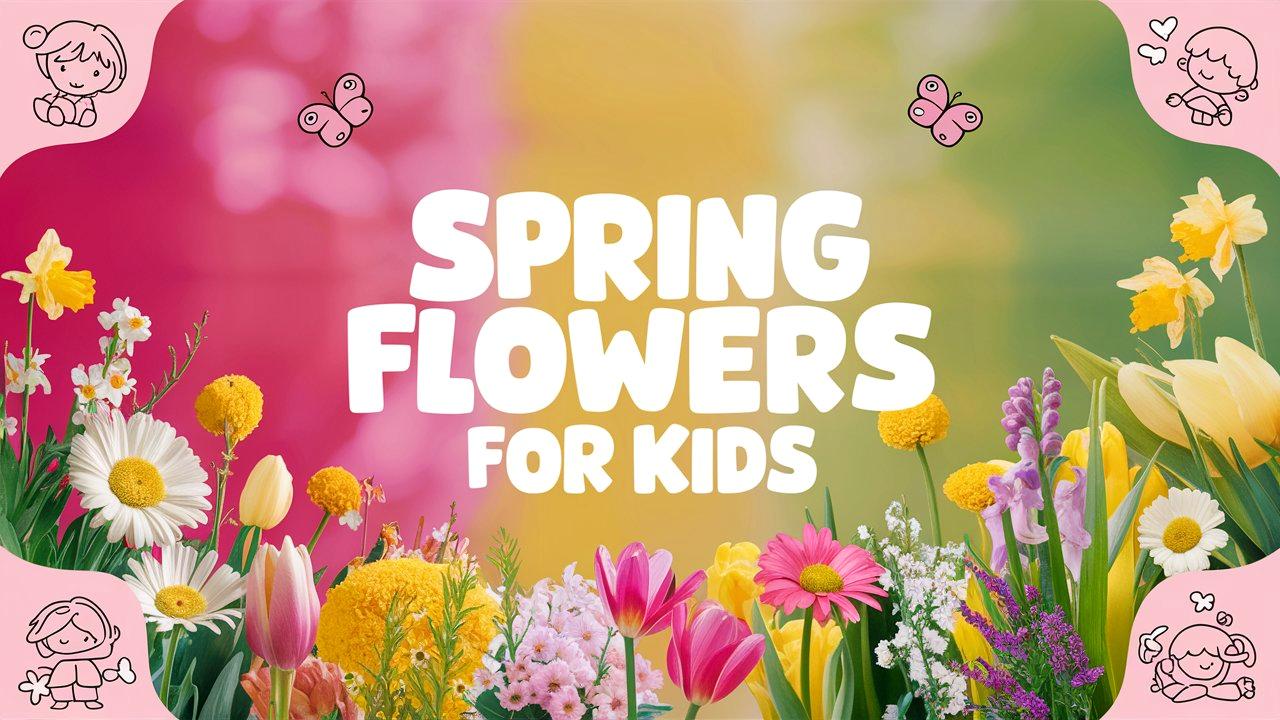As the chill of winter fades and the days grow longer, the arrival of spring brings a burst of life and color to our gardens. For families with children, this is the perfect opportunity to engage little ones in learning about nature through planting and cultivating flowers.
Gardening with kids not only enhances their understanding of the natural world but also promotes responsibility and nurtures their creativity. This post will explore easy-to-grow spring flowers ideal for kids, followed by a practical section on how to start growing these cheerful blooms from seeds.
Marigold
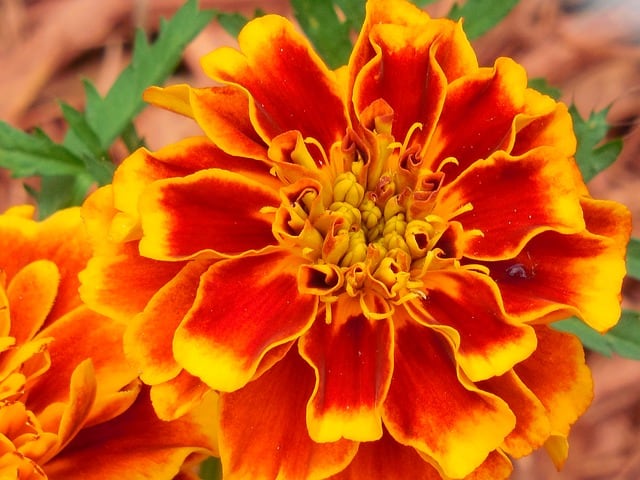
Marigolds (Tagetes spp.) are among the most popular flowers for budding young gardeners. They come in various shades of orange, yellow, and even reddish hues, providing a vivid display that brightens any garden. Marigolds are simple to grow and are tolerant of various soil types. They thrive in full sun, making them an excellent choice for beginner gardeners.
One of the remarkable features of marigolds is their ability to repel certain garden pests, like aphids and nematodes, acting as a natural pest deterrent. This makes them not only a beautiful addition but also a helpful one. Kids will love watching how marigolds attract butterflies and bees, providing a hands-on opportunity to learn about pollinators and the ecology of a garden.
Morning Glory
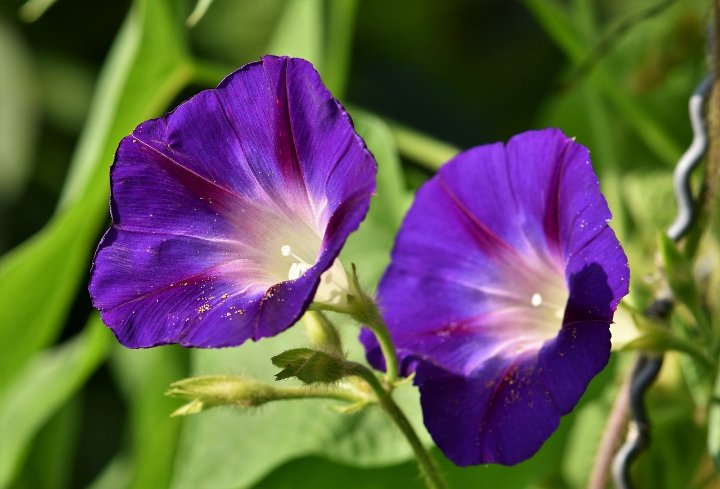
With their vibrant, trumpet-shaped blooms, morning glories (Ipomoea spp.) are a captivating choice for children. These climbing plants can grow up trellises or fences, which adds an exciting dimension to gardening. Kids will enjoy watching the vines wrap around structures as they grow.
Morning glories thrive in sunny locations and can be sown directly into the ground after the last frost. They’re available in various colors including blue, purple, pink, and white, which can invigorate any garden space. The fun part is that these flowers bloom in the morning and close up in the afternoon, allowing children to observe this daily transformation. With their fast growth and enchanting blooms, morning glories are sure to inspire wonder in young gardeners.
Zinnia
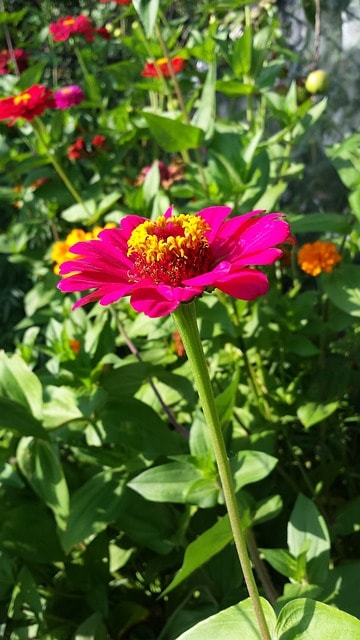
Zinnias (Zinnia elegans) are magical flowers that bring a riot of color to gardens during spring and summer. They are forgiving plants, which makes them ideal for children learning to garden. Zinnias come in many shapes and sizes, giving kids a choice between daisies and more formal double blooms.
These flowers thrive in full sun and can handle drought once established, making them a robust selection for young horticulturists. Zinnias also attract butterflies, providing an excellent opportunity for kids to learn about the lifecycle of these beautiful creatures right in their gardens. With quick germination and a long blooming season, zinnias ensure that kids will see their efforts rewarded in just a few short weeks.
Nasturtium
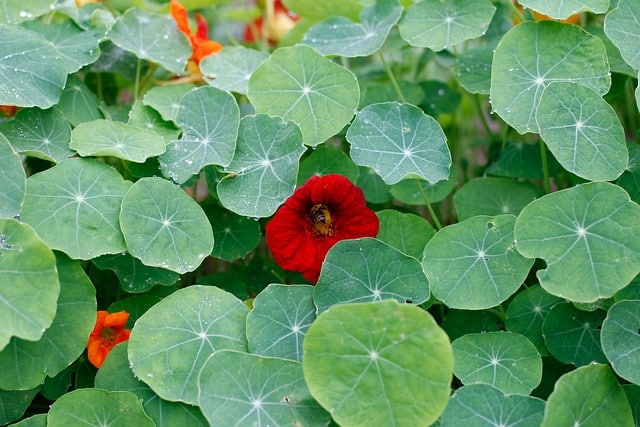
Nasturtiums (Tropaeolum majus) offer a unique blend of beauty and edibility that intrigues young gardeners. Known for their stunning, round leaves and bright, colorful blooms, nasturtiums thrive in sunny spots and poor soil, making them low-maintenance and perfect for children.
One of the most fascinating aspects of nasturtiums is that both the leaves and flowers are edible, with a peppery taste that can spice up salads and dishes. Kids will love being able to pick their flowers and taste the results of their gardening efforts. Nasturtiums also attract pollinators, encouraging curiosity about the ecosystem while enjoying the vibrant colors they bring to the garden.
Impatiens
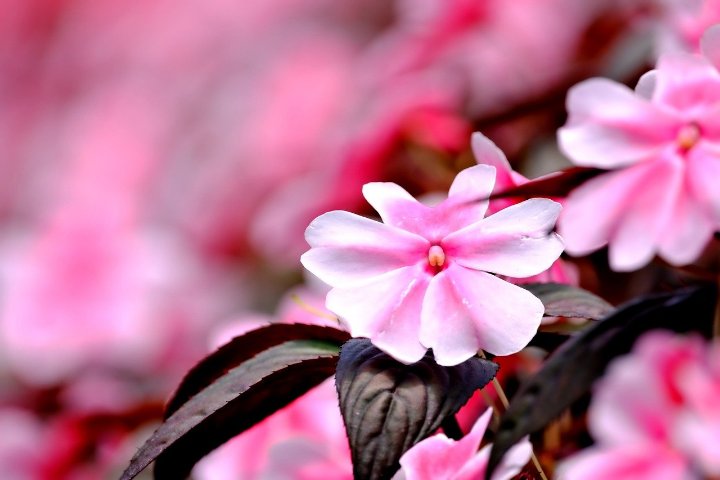
Impatiens (Impatiens walleriana) are often associated with shade gardens, making them an excellent option for areas that do not receive full sunlight. These flowers bloom in a range of soft pastels and bright, lively hues, delighting the eyes of both adults and children alike.
Growing impatiens is easy; they require only regular watering and some pruning to keep them bushy. Their vibrant blooms can light up darker areas of the garden, creating a magical atmosphere for kids to explore. Children will appreciate the quick growth and prolific blossoming, which yields a continuous display of flowers throughout the spring and summer months.
Sunflowers
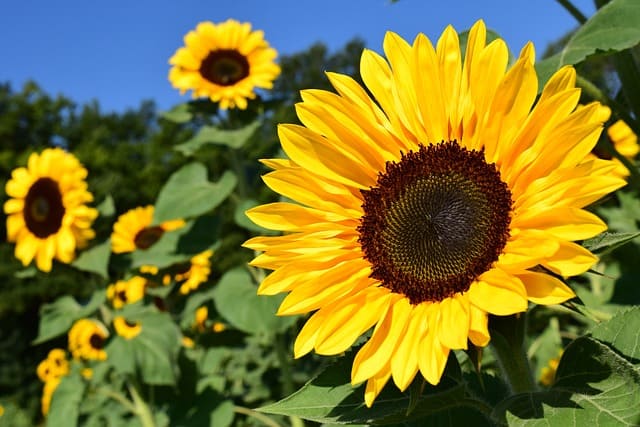
Sunflowers (Helianthus annuus) are a classic choice and one of the most beloved flowers among kids. Known for their towering height and large, cheerful heads, sunflowers are impossible to miss in a garden. Children enjoy not only growing them but also watching the sunflowers follow the sun throughout the day, a phenomenon known as heliotropism.
These sturdy plants are relatively easy to grow from seeds. They require full sun and have a straightforward growing process, typically sprouting within days. Once harvested, the sunflowers produce seeds that can be used as snacks or re-planted for new blooms. This looping cycle adds an element of anticipation and excitement to the gardening experience.
Geranium
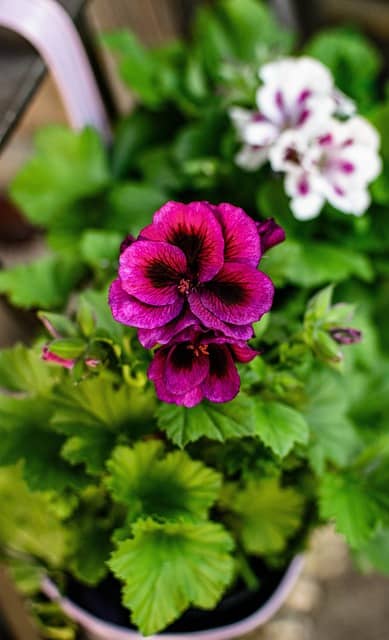
Geraniums (Pelargonium spp.) are robust plants that flourish both in garden beds and containers. With their delightful scents and colorful blooms, they appeal to all the senses. Geraniums are resilient, meaning they can withstand varying degrees of care – a perfect match for children’s unpredictable schedules.
These flowers often bloom from spring to fall, offering a long-lasting reward for young gardeners. Geraniums thrive with regular watering and deadheading, and they can provide fantastic lessons on caring for plants while fostering a sense of responsibility.
Nigella
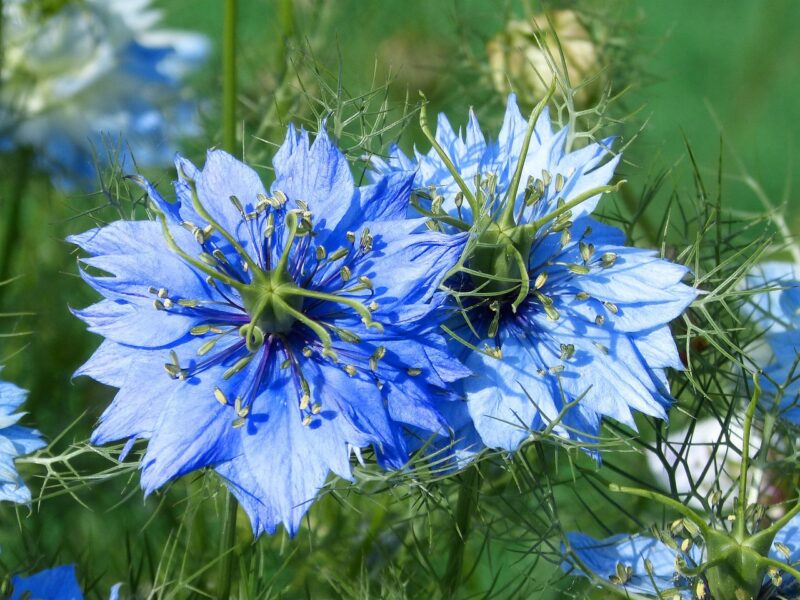
Nigella, often known as love-in-a-mist (Nigella damascena), presents a unique floral experience for children. The delicate blue or white flowers emerge in a tangle of feathery foliage, creating a whimsical look in the garden. One of the key learning opportunities with nigella is its fascinating seed pods, which resemble tiny lanterns once the flowers fade.
Germinating nigella is simple; it prefers sunny spots and well-drained soil. They can be directly sown outdoors in the spring, making them accessible for kids to plant. Observing the entire cycle, from flower to seed pod, intrigues young minds and encourages them to explore life cycles in gardening.
Sweet Peas
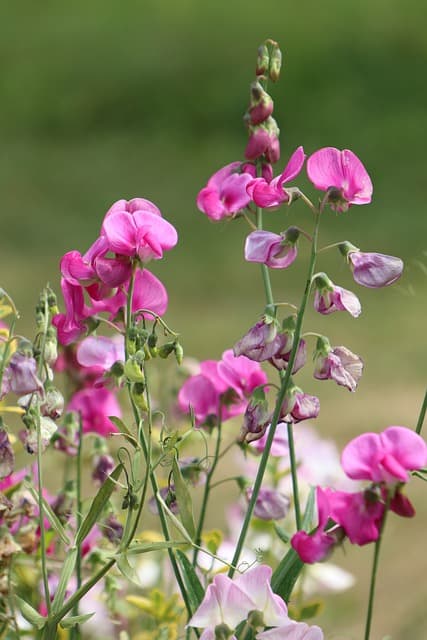
Sweet peas (Lathyrus odoratus) are not only visually stunning but emit a delightful fragrance that enchants children as they garden. These climbing flowers come in various colors, ranging from soft pastels to vibrant shades. Their sweet smell naturally draws children closer, creating an inviting environment for young gardeners.
Sweet peas are best grown in cooler weather, making them ideal for early spring planting. They require some support as they grow upward along trellises or supports, creating an engaging hands-on experience. Children can take joy in cutting the blooms for indoors, allowing them to incorporate nature into their home environment.
Growing Flowers Activity For Kids
Now it’s time to embark on the exciting journey of growing your own! This activity fosters a sense of achievement, deepening the bond between children and nature while imparting valuable lessons on patience and care.
Supplies
Before you start your flower-growing adventure, gather the necessary supplies:
Seeds of the chosen flowers (marigold, zinnia, nasturtium, etc.)
Seed starter trays or pots: Small containers to start the seeds indoors.
Seed starting mix: A lightweight mixture to help seeds germinate.
Watering can or spray bottle: For easy watering without disturbing the soil.
Labels: To mark and keep track of different seeds planted.
Light source: If growing indoors, ensure you have adequate light, either from a sunny window or grow lights.
Garden tools: Small hand tools like trowels or hoes to make gardening easier.
Garden space or pots: To transplant seedlings once they grow.
How To Grow Flowers From Seed
Here’s a straightforward guide to help children successfully grow their beautiful flowers:
Select Your Seeds: Choose one or a few of the flowers listed above, taking note of which flowers prefer bright sunlight and which can tolerate some shade.
Prepare Your Containers: Fill your seed starter trays or pots with seed starting mix. Gently tap to settle the mix without compacting it too tightly.
Plant the Seeds: Sow seeds according to the instructions on the packet. A good rule of thumb is to plant seeds at a depth of about two to three times their diameter. Allow kids to place seeds in rows or clusters, making the process feel like a fun craft.
Water Gently: Use a watering can or spray bottle to moisten the soil without overwatering. The soil should be damp but not soggy.
Provide Warmth and Light: Place the containers in a warm location with plenty of light, such as a sunny window. If growing indoors during cooler weather, consider using a heat mat to provide additional warmth for germination.
Monitor Growth: Once the seeds sprout, continue to provide regular moisture and care. Children can keep a gardening journal to note their observations and progress, encouraging them to engage deeply with the process.
Transplanting: Once seedlings develop their first true leaves and are at least a few inches tall, they can be transplanted to larger pots or directly into the garden. Make sure to harden them off first by gradually exposing them to outdoor conditions over several days.
Ongoing Care: Teach children to water regularly, remove weeds, and understand signs of pests or diseases. Encourage them to observe their flowers as they grow, noting any changes and their growth patterns.
Enjoy the Blooms: As the flowers bloom, emphasize the joy of seeing the results of their hard work. Children can cut flowers for arrangements or share them with family and friends, enhancing the sense of accomplishment.
Conclusion
Gardening is an excellent way for kids to connect with nature, engaging them in the beauty and wonder of growing flowers. The variety of easy-to-grow spring flowers ensures that children of all ages can participate and find joy in this rewarding activity. From nurturing seeds to observing the enchanting blossoms, the experience with spring flowers fosters lifelong lessons about responsibility, patience, and the environment.


